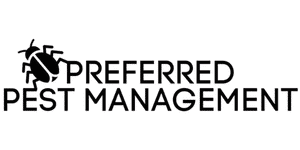Table of Contents
Introduction
Fleas are a common problem for homeowners, especially those with pets. Not only do they cause discomfort for pets and humans alike, but they can also carry diseases. In this article, we will discuss how to identify and eliminate flea infestations in your home.
Identifying Fleas
Fleas are small, wingless insects that feed on the blood of animals and humans. They are typically brown or black in color and have flattened bodies that allow them to move easily through fur or carpet fibers. To identify fleas in your home, look for the following signs:
- Bites: Flea bites are often small, red, and itchy. They can appear in clusters on the legs, ankles, and feet.
- Pets Scratching: If your pet is scratching excessively, it could be a sign of a flea infestation.
- Flea Dirt: Flea dirt is a combination of flea feces and dried blood. It resembles black pepper and can be found on pet bedding, carpets, and other areas of your home.
How to Get Rid of Fleas
There are several steps you can take to eliminate fleas from your home:
- Treat Your Pets: Use flea medication or flea collars to treat your pets and prevent further infestations.
- Vacuum Regularly: Vacuum carpets, furniture, and pet bedding regularly to remove flea eggs and larvae. Dispose of the vacuum bag or canister in an outdoor trash can.
- Wash Bedding and Linens: Wash pet bedding, human bedding, and any other linens that may have come into contact with fleas in hot water to kill fleas and their eggs.
- Use Flea Bombs or Sprays: Flea bombs or sprays can be used to treat entire rooms or outdoor spaces for fleas. Follow the instructions carefully and wear protective clothing and equipment.
- Hire a Professional: If you have a severe flea infestation in your home, it is best to hire a professional like Preferred Pest Management for flea control services.
FAQs About Fleas in Homes
Are fleas dangerous to humans?
Fleas are not known to transmit diseases to humans, but they can cause discomfort and allergic reactions.
Can fleas live in carpet?
Yes, fleas can live in carpet and other soft materials in your home.
How long does flea treatment take?
The length of flea treatment in your home depends on the severity of the infestation. It can take anywhere from a few days to several weeks.
Conclusion: Eliminating Fleas in Homes
Fleas can be a frustrating and uncomfortable problem for homeowners. By identifying the signs of a flea infestation and taking the necessary steps to eliminate them, you can protect your pets and your family from further discomfort.
Remember to treat your pets, vacuum regularly, wash bedding and linens, use flea bombs or sprays, or hire a professional for flea control services in your home.
To learn more about flea control services for those that live in the Dallas, TX area, visit Preferred Pest Management’s Flea Exterminator service page now to ensure ridding your home of flea issues.
Learn more about Integrated Pest Management form the USDA
The Importance of Flea Control in Suburban Areas
Flea control is a critical concern in suburban areas, where the interplay between pet ownership, green spaces, and close-knit communities creates ideal conditions for flea infestations. Left unchecked, fleas pose significant risks to public health, pets, and the overall quality of life in these neighborhoods.
Suburban areas often have high rates of pet ownership, with many families keeping dogs and cats as part of their households. Fleas, which are parasitic insects, thrive on the blood of these animals, causing itching, irritation, and potential skin infections. Beyond discomfort, fleas can transmit harmful diseases to both pets and humans, such as tapeworms and, in rare cases, murine typhus. Flea infestations can escalate quickly, as fleas reproduce rapidly, laying hundreds of eggs that can spread throughout homes, yards, and even neighboring properties.
Moreover, fleas are not limited to households with pets. Suburban green spaces, such as parks, walking trails, and backyards, often harbor wildlife like raccoons, squirrels, and feral cats, which can serve as hosts for fleas. Without proper control measures, fleas can easily migrate from wildlife to domestic animals and humans, perpetuating the infestation cycle.
The presence of fleas in a suburban community also poses economic and social challenges. Infestations can result in costly pest control treatments, damage to carpets and furniture, and stress for homeowners. Additionally, the stigma associated with fleas can affect neighborhood appeal, particularly for communities marketed as family-friendly and pet-centric.
Flea control is vital in suburban areas to protect the health and happiness of both residents and their pets. Proactive measures, such as regular pet treatments, proper lawn maintenance, and community-wide pest control efforts, are essential to keeping these resilient pests at bay and preserving the suburban quality of life.
